Maine’s Magical Islands
From a getaway on Portland’s doorstep to a rugged outpost of Acadia National Park, we explore the special hold that Maine islands have on the imagination.
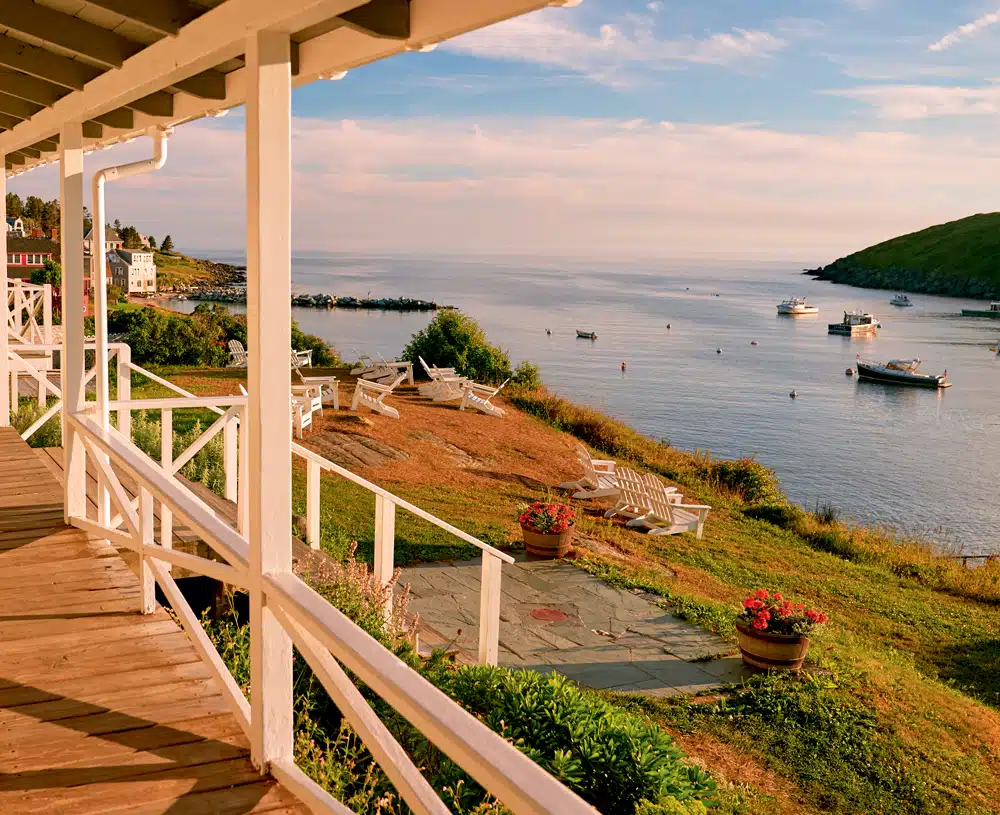
A resting place for Monhegan’s visitors for more than a century, the Island Inn is situated on a bluff that provides a commanding view of the harbor and a front-row seat for sunsets.
Photo Credit: Mark FlemingWhen we board an island-bound ferry on the coast of Maine, we sense that a different way of life awaits—one where vigilance toward weather and tides and even ferry schedules cannot be taken lightly. Miles out to sea, nature, not man, is in charge.
Where once there were dozens of year-round island communities off Maine’s coast, only 15 remain. But the beauty of the sea, pine-lined paths, meadows, and sweet cottages on bluffs has never ceased inspiring us. Come summer, like clockwork, day-trippers descend with backpacks and vacationers with suitcases.
Here, summer cottages of the famous and wealthy that have been in the family for generations lie tucked behind lush garden hedges and winding dirt driveways. These islands are where they find normalcy, where fishermen and boatbuilders and carpenters have known them and their children simply as neighbors, even if for only a few months a year.
This was the landscape, both physical and social, that photographers Winky Lewis and Mark Fleming explored last summer on visits to five Maine islands, each one proud of its individual identity, its particular hold on the imagination.
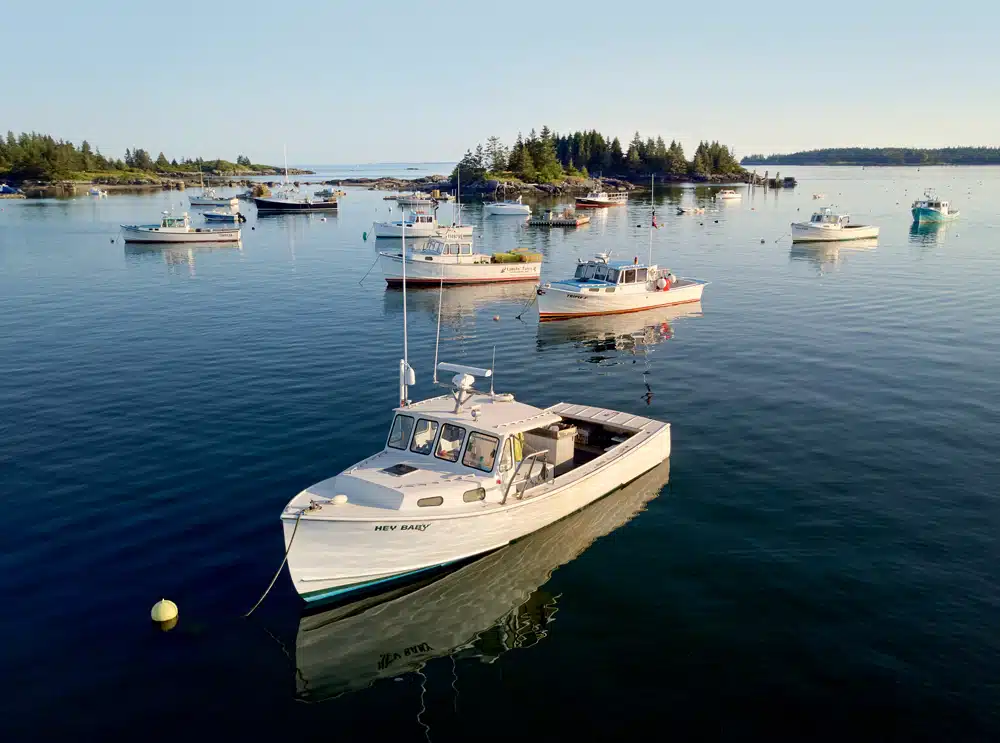
Photo Credit : Mark Fleming
On a fine summer day, when the ferry docks at Peaks Island—only 20 minutes from the bustle of downtown Portland—hundreds of people spill out. You can bike its perimeter in 40 minutes, and that includes pausing to sun yourself on boulders and to buy a jar of honey on the honor system from a tiny roadside stand.
A dozen miles out in Muscongus Bay lies Monhegan, which for more than a century has been an inspiration for artists ranging from Rockwell Kent to Jamie Wyeth. Cliffs tower over the sea, and paths lead to meadows where hundreds of varieties of wildflowers grow.
The two Fox Islands—North Haven and Vinalhaven—are separated by only a narrow thoroughfare, yet they have distinct personalities that reflect divergent histories. North Haven has long been home to the bluest of New England’s blue bloods, as well as artists and writers, while Vinalhaven once teemed with quarry workers, who carved out massive chunks of rock used in the grandest buildings in the land. Today, Vinalhaven’s lobstering fleet is one of the largest on the Atlantic seaboard.
The wildest and most rugged part of Acadia National Park can be found on Isle au Haut, which rewards intrepid hikers with miles of trails and countless indelible views.
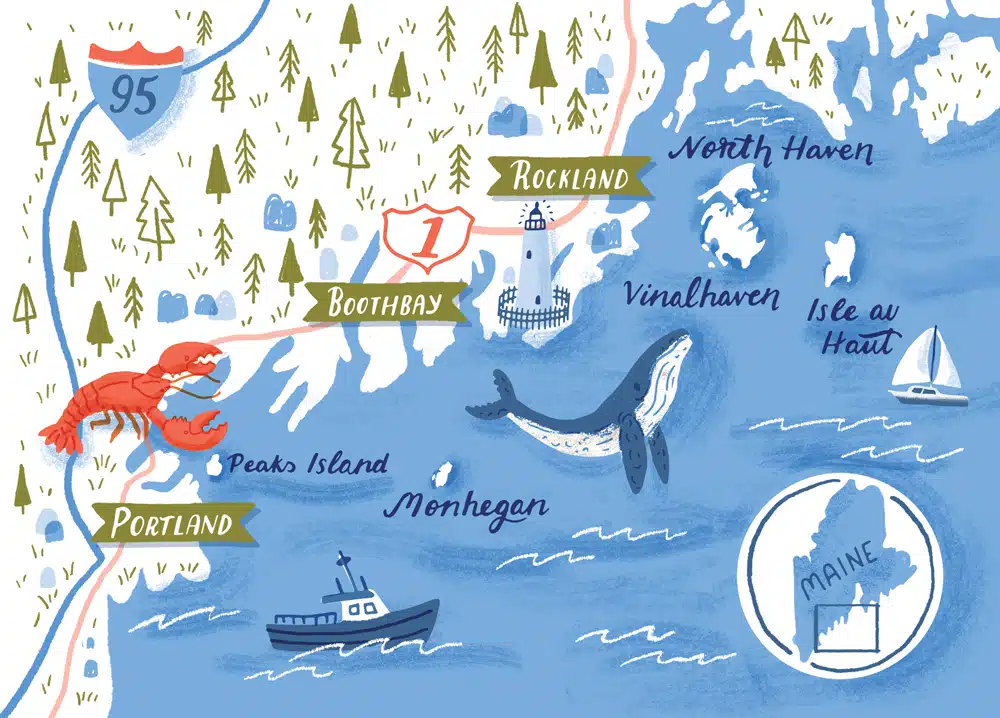
Photo Credit : Art by Jessica McGuirl
____
An Islander’s Peaks Island
Kim MacIsaac | Co-owner, Peaks Island Tours
I’m a fourth-generation islander on my mother’s side, third on my dad’s. But I’m a newcomer. There are people whose family has been here since 1632, even. Almost all the cottages and homes out here are at least 100 years old.
While the other islands in Casco Bay, the inhabited ones, are pretty much fishing islands, with very few people living there, we’re basically a residential island. The year-round people all work; the summer people are here for a good deal of the season, and they’re just part of the community. We do get as many as 2,000 visitors a day in the summer—day-trippers—but we’re really like any other neighborhood in Portland. It’s just that we’re separated from it by three miles of water. We’re more like a little village.
It’s great to come, take a tour, rent a golf cart, rent a bike, go exploring, have a nice meal, a drink at the pub, an ice cream cone. It’s basically just R&R here. Take a vacation from stress.
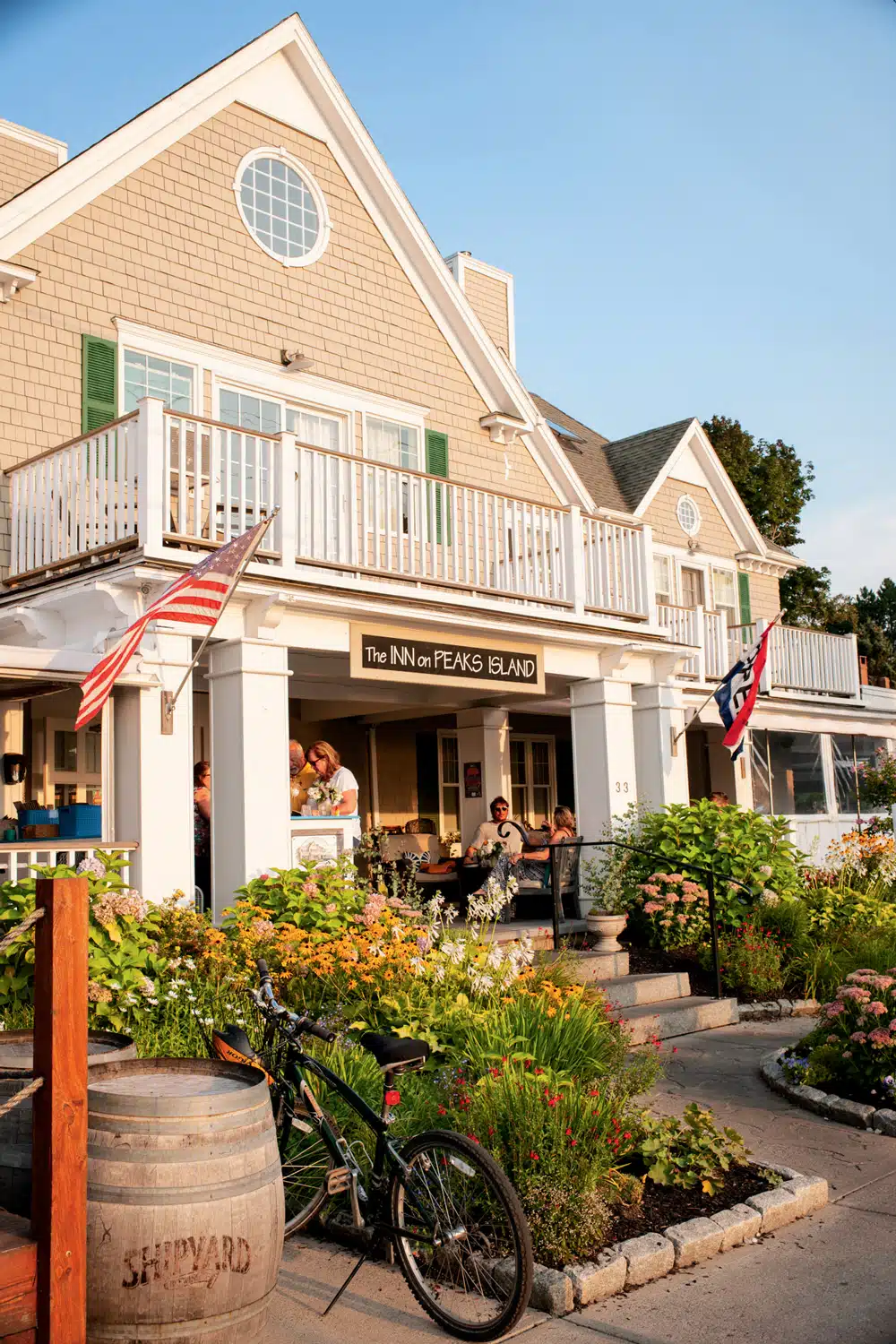
Photo Credit : Winky Lewis
Walking is the preferred method of getting around. Almost everything is accessible from the ferry. A few museums are maybe five or 10 minutes away, but everything else is right there.
That said, the back shore is the spot to go for walks. The best beaches are on the ferry side, but the best views are on the back side of the island. It’s rocky coast, and it’s quieter. There are also hiking paths through the woods—we have almost 200 acres of conservation land.
Be sure to see Battery Steele, a World War II gun bunker. It’s the only one of its size in Maine, and it mounted two battleship guns—huge guns. The island had the largest military base in Casco Bay and somewhere close to 900 soldiers during the war. We’ve got three museums, too, including the Umbrella Cover Museum, which is a hoot. The others are both Civil War museums, the Fifth Maine Regiment Museum and the Eighth Maine Regiment Lodge and Museum.
For eating out, I kind of switch back and forth between the Cockeyed Gull and the Inn on Peaks Island. But I also eat at the food truck, Milly’s Skillet, which has a good lobster roll. And really, I try to patronize all the places.
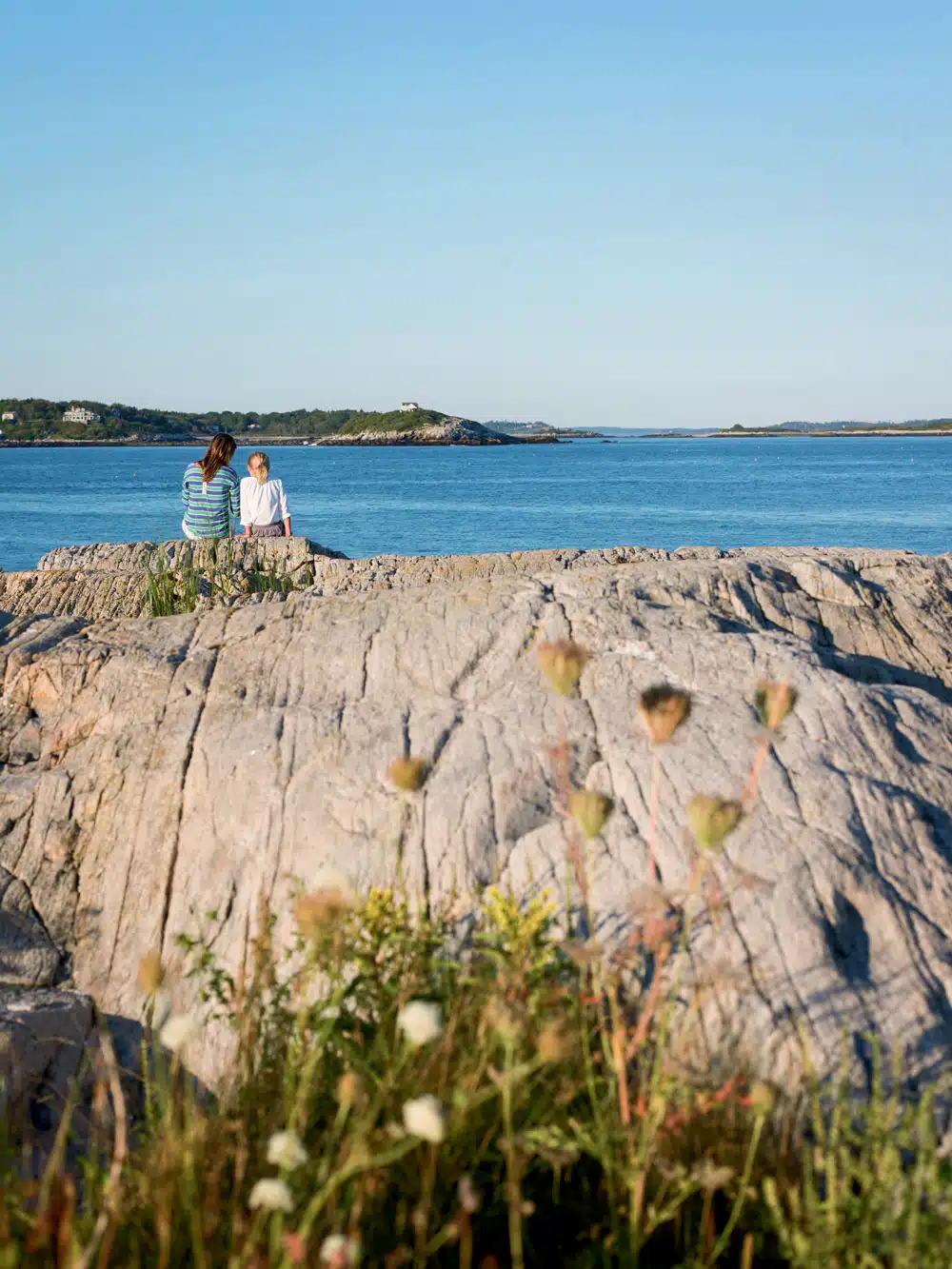
Photo Credit : Winky Lewis
The highlight of the summer season out here is the Lions Club variety show in August. You have some professional entertainers in it, you have normal people who have some talent, and then you have the people who have no talent—that’s the best part! We also have an around-the-island road race in July with over 500 racers, all ages, who get together for a cookout afterward.
In addition, we have a community website (peasksisland.info), which gives you all kinds of information about the island. And no, we are not an amusement park anymore! That’s what Peaks Island was known for until about 1930 or so—we had a boardwalk, and a roller coaster down the street, and all kinds of fast-food stands and shops and everything. We tell people if you want amusements, go down Route 1 to Old Orchard Beach. If you want to shop, go over to the mall! —As told to Cathryn McCann
Peaks Island Trip Planner
Food & Drink
- The Cockeyed Gull: Eclectic, globally influenced menu in a casual setting, plus a full bar and a deck with Portland skyline views.
- Milly’s Skillet: Everything from cinnamon buns and breakfast subs to sirloin burgers and fish tacos, all cooked up in a cheery food truck.
Lodging
- The Inn on Peaks Island: Six suites with a seaside-cottage vibe, just steps from the ferry, plus a restaurant serving upscale pub fare and ale brewed on-site.
- Eighth Maine Regiment Museum and Lodge: Rustic 1891 building with 14 tidy guest rooms (shared bathrooms).
Getting There
- Casco Bay Lines: Daily service from Portland; cars allowed.
____
An Islander’s Monhegan
Matt Weber | Lobsterman and co-owner of the Monhegan Brewing Company
The thing with Monhegan is, when you’re out here, you’re out here. You have to disconnect. It’s not like going to Cadillac Mountain or Sand Beach in Bar Harbor, where you can be back at your car in five minutes. Here you’re at least an hour by boat from anything.
It’s a little more rugged. Think sneakers, not flip-flops. Bring a sweatshirt. Pack it in, pack it out. There are public restrooms, but if you’re on the back side of the island, you’re going to have to walk a little ways to get to them.

Photo Credit : Mark Fleming
No bike trails, but lots of places to walk. Cathedral Woods is a big forest—dark and quiet and cool—and feels like you’re in a storybook. About 15 minutes from the road, you’ll start to see all these little branches and pine needles and pine cones that people have put together to make fairy houses. I take my niece and nephew out there every year, and they play around in there for hours.
On the very south end of the island, at Lobster Cove, there’s an old tugboat that went ashore in the late ’40s. The hull is still mostly intact, and you can sit right on it and look out to sea. There’s almost always a nice sea breeze, and it’s not uncommon to see whales or porpoises or seals from that spot. All of a sudden, you think, Where in the heck is this place?
The Monhegan Museum is also pretty amazing—artwork by Edward Hopper, all three generations of Wyeths, to name a few— but it’s a museum of art and history, so it’s all about the island, too. You can get a tour to the top of the lighthouse, and the view from up there is the Gulf of Maine on one side, the coast on the other, and all the islands in between. It’s a really cool thing.
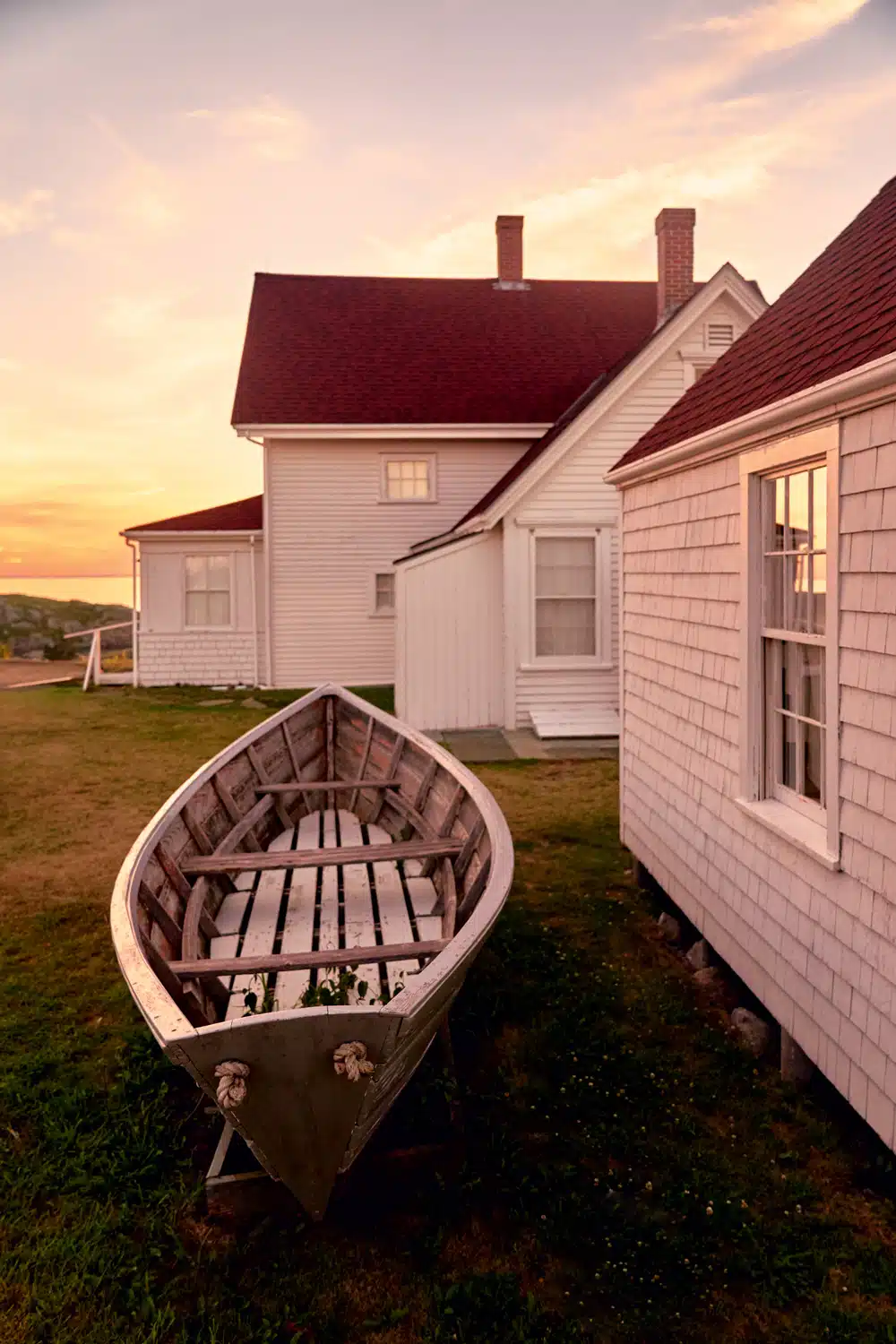
Photo Credit : Mark Fleming
At 2 o’clock you can go down to the dock and hop on the ferry from Boothbay Harbor, the Balmy Days II, which does a little guided trip around the island and out to the Duck Rocks and back. I’m not sure a lot of people know about it. It’s a great way to see the back of the island from the water, which I get to do all the time when I’m lobstering. When I was first out here, the trip cost a dollar, and now it’s like four or five. Can’t beat it for that.
Even in summer the water seems pretty cold to me, but you know how it is when you’re a kid—it doesn’t seem to matter. The bigger kids jump off the dock, the smaller kids are at Swim Beach, and now everyone’s got kayaks and paddleboards, so there’s always a little fleet roaring around the harbor.
Shermie, one of our older fishermen, he’s been here for five generations now. He runs the Fish House, and you go in and you order food and it gets cooked up right there. The seating is outside, basically on the beach, and you’re right at the harbor, and it’s perfect.

Photo Credit : Mark Fleming
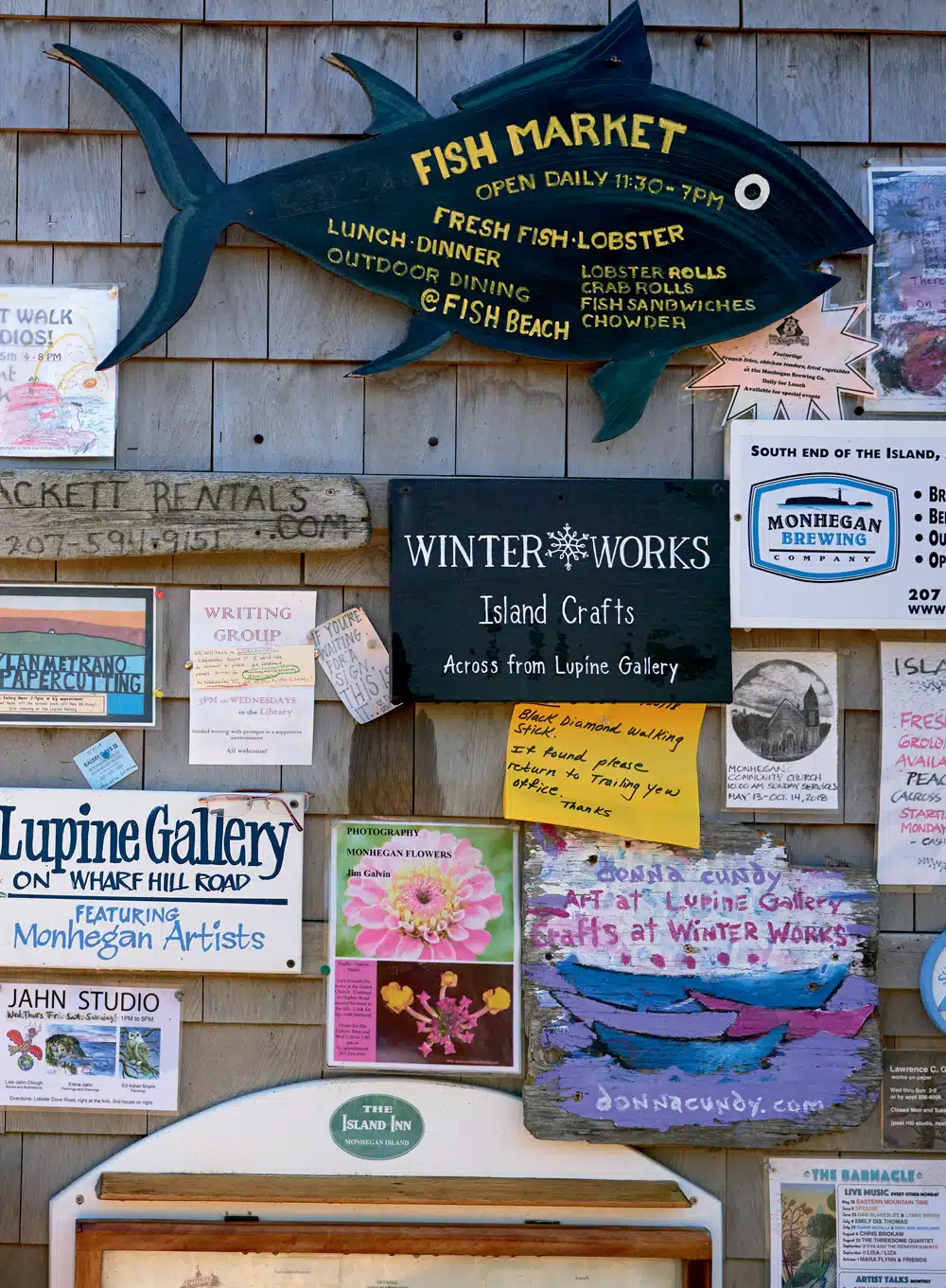
Photo Credit : Mark Fleming
The thing that we all talk about here more than anything else—and our favorite thing to talk about—is Monhegan. What has happened to me and most of the people who live here, I think, is you may never have really planned on spending your life here, and then you realize you couldn’t live anywhere else. Monhegan just sneaks up on you and shows you something about life that you might never have seen or understood before. —As told to Jenn Johnson
Monhegan Trip Planner
Food & Drink
- The Fish House: Seafood-shack classics with the bonus of beach access and a harbor view.
- Monhegan Brewing Company: Island-crafted beer and soda, plus occasional food truck fare and live music.
Lodging
- The Island Inn: Century-old summer hotel on the harbor; perks include an upscale restaurant and the Barnacle, a popular café.
- Shining Sails: Comprising a B&B with seven rooms and suites, an inn with four suites, and weekly cottage rentals.
- Monhegan House: 1870s inn with ocean views, a formal dining room, and a café called the Novelty, serving pizza and ice cream.
- The Trailing Yew: Friendly and simply furnished guest rooms (some lit only by oil lamps) scattered in vintage buildings.
Getting There
- Monhegan Boat Line: Daily passenger service from Port Clyde.
- Hardy Boat Cruises: Daily passenger service from New Harbor.
- Balmy Days Cruises: Daily passenger service from Boothbay Harbor.
____
An Islander’s North Haven
Eva Hopkins | Manager, North Haven Gift Shop
I work in a building with a lot of personal history. It was once the W.S. Hopkins General Store, owned by my great-great-grandparents. Now my uncle David owns the shop, and also the Hopkins Wharf Gallery, which sells island art including paintings by my dad [nationally renowned artist Eric Hopkins].
As a kid on North Haven, I wasn’t afraid to talk to anyone. On an island there are new people coming every day in the summer. You’re not stuck in little cliques of age groups or interests. I’m proud that I can relate to people from a lot of different angles.
North Haven is seen as the goody-goody island, and Vinalhaven as more rough. But we’re not the rich person’s island at all. We’re still pretty rustic and unpolished, in a good way. We’re real.
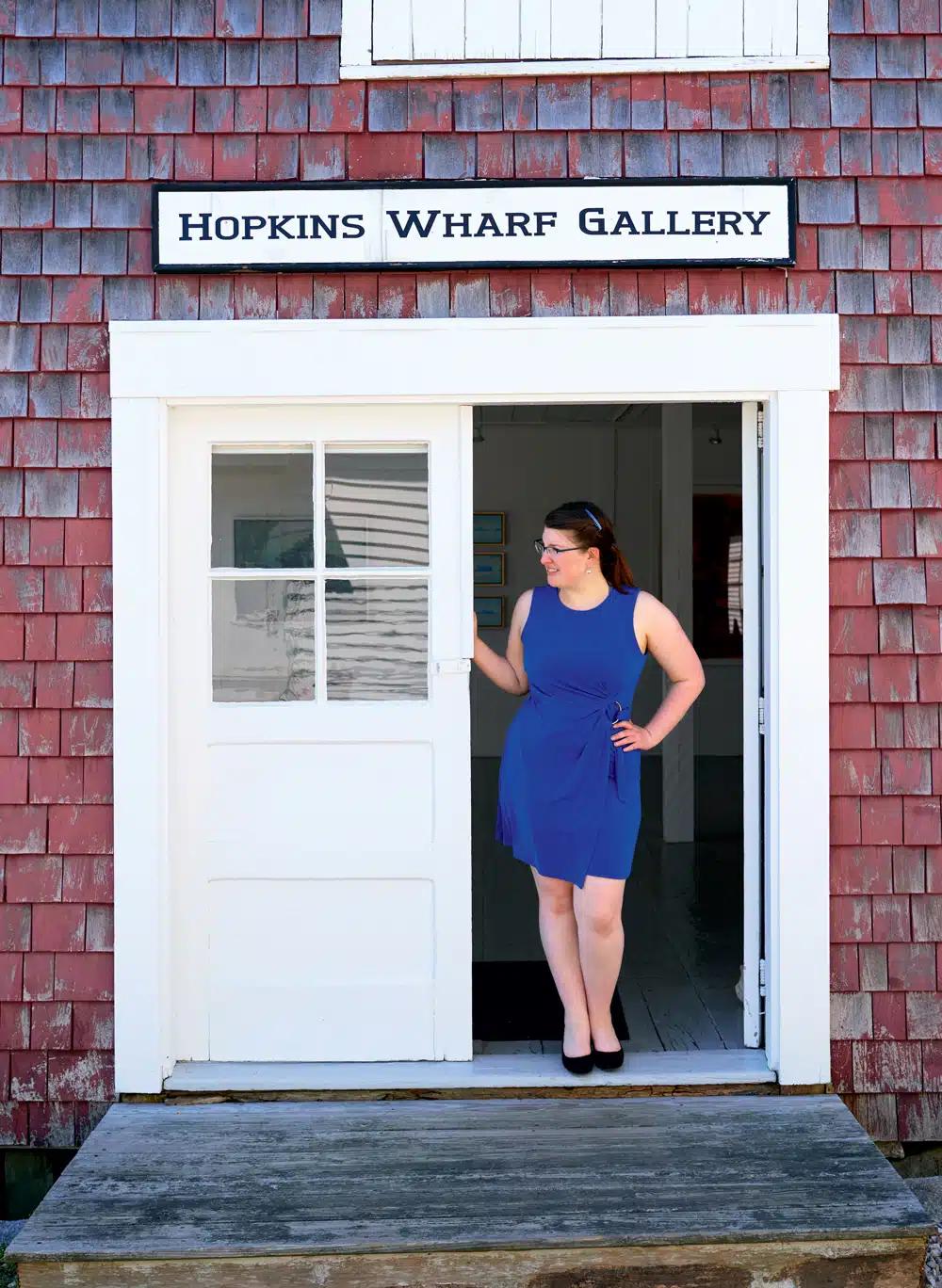
Photo Credit : Mark Fleming
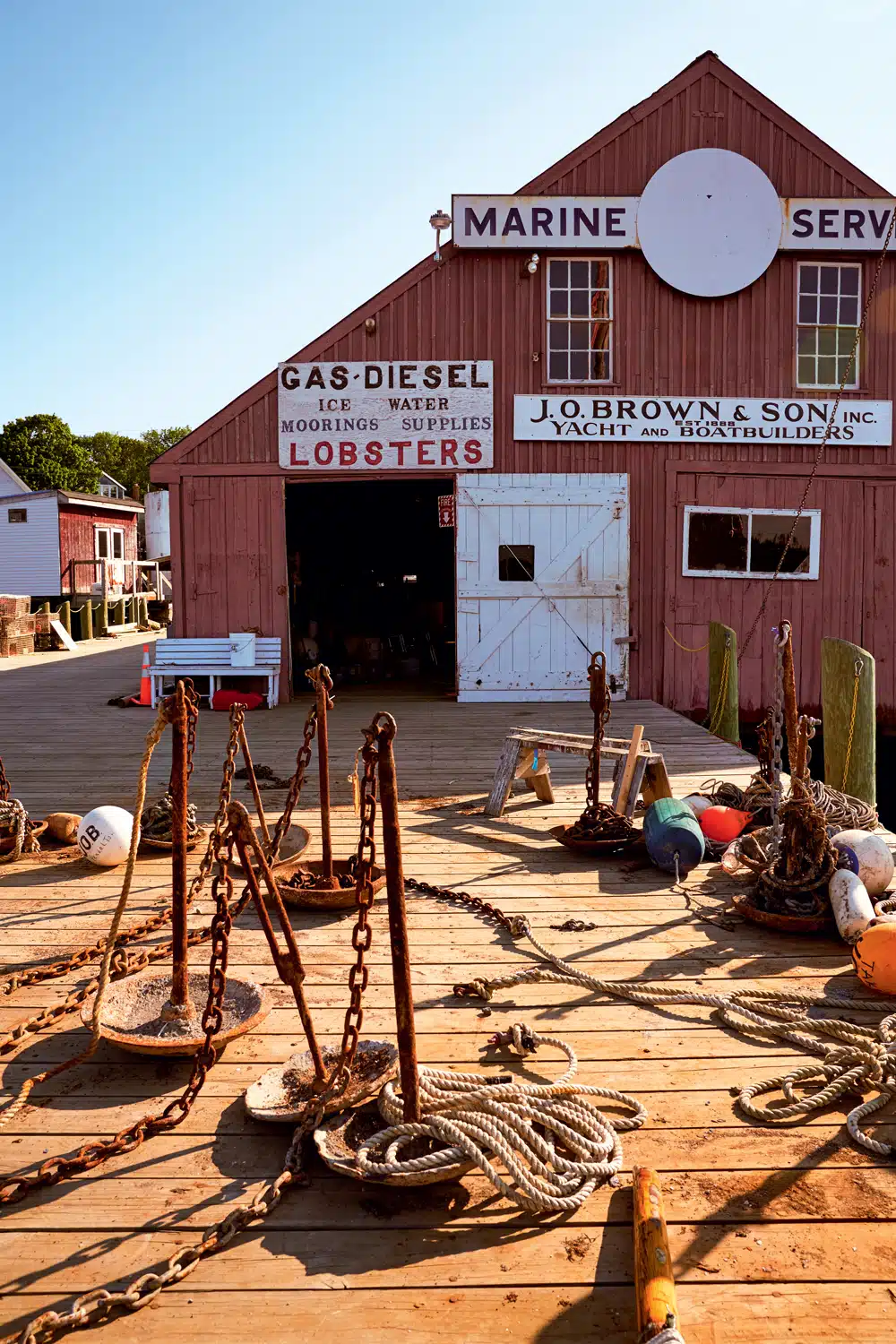
Photo Credit : Mark Fleming
I’m most proud of our theater and music. We’ve had world-quality performers and artists here [at Waterman’s Community Center] to teach us, and we’ve put on shows that are pretty good, I’d say. We’re the smallest K–12 school in the state, but we took our musical, Islands, to off-Broadway [in 2001]. It was about what it’s like to live on North Haven. Our performance was on PBS, too, and a lot of people kind of know of us through that.
We have a great historical society, which does talks all through the summer. And to really get a feel for the island, go to Brown’s Boatyard. It’s been in the same family since 1888, and it’s so visually rich. It’s where the old-timers would gather around the big old stove—that was the place to be.
My favorite place for food is Calderwood Hall. It’s where we go to visit with everybody. At night there’s a restaurant serving really top-quality artisan pizza; in the daytime the market sells sandwiches and fresh pastries and bread—the focaccia is to die for. Right below is North Haven Brewing Co., whose beer is really, really good. A destination for the fancy or upscale is Nebo Lodge, which is very pretty. Something special to do is a round trip on the Equinox, which takes you from Rockland to Nebo Lodge, and you have dinner and a few hours to walk around before going back. It’s an exquisite date night.
To get lobster, you want to talk to a fisherman. April Brown is an island EMT, but she has a boat, and with her father she’ll do your lobster. You order it, and they deliver it live or cooked.
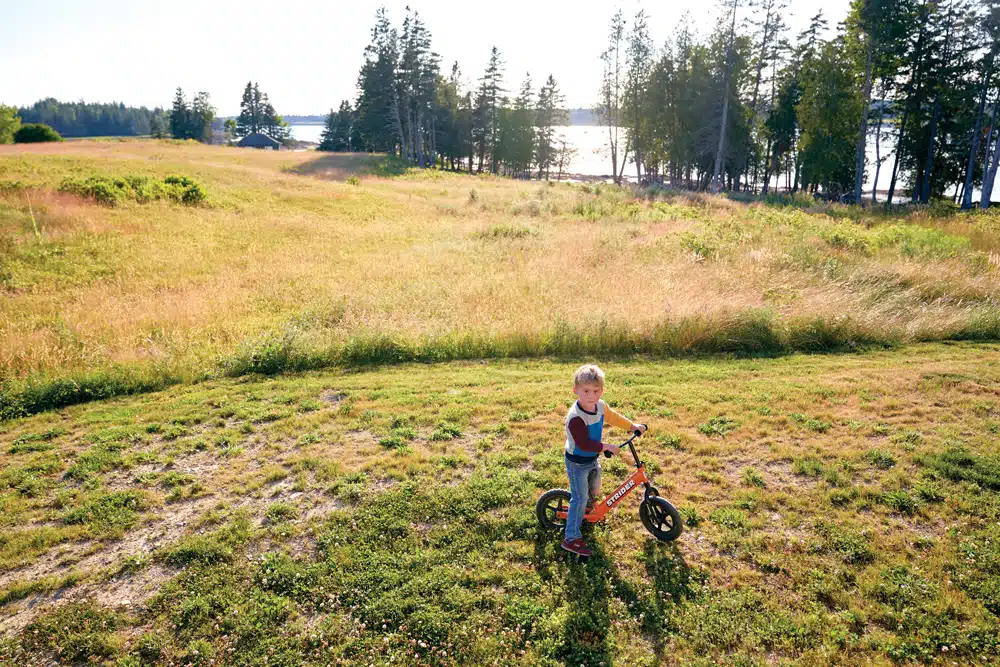
Photo Credit : Mark Fleming
This is a great place for walking. For one of the best views, go to Ames Knob on the north shore. It’s all open, with a 360-degree view of the bay and the Camden Hills, and sunsets are amazing. This is the view I grew up with, just sitting there looking out at the water and the boats. My favorite walk, though, is Sage Woods. The vista is really different: Usually you’re looking toward Camden, but here you look out to Isle au Haut and Eagle, maybe, and Stonington. It feels a lot more remote. Burnt Island is also worth going to. It’s an island you can walk to at low tide, and it feels familiar and foreign at the same time.
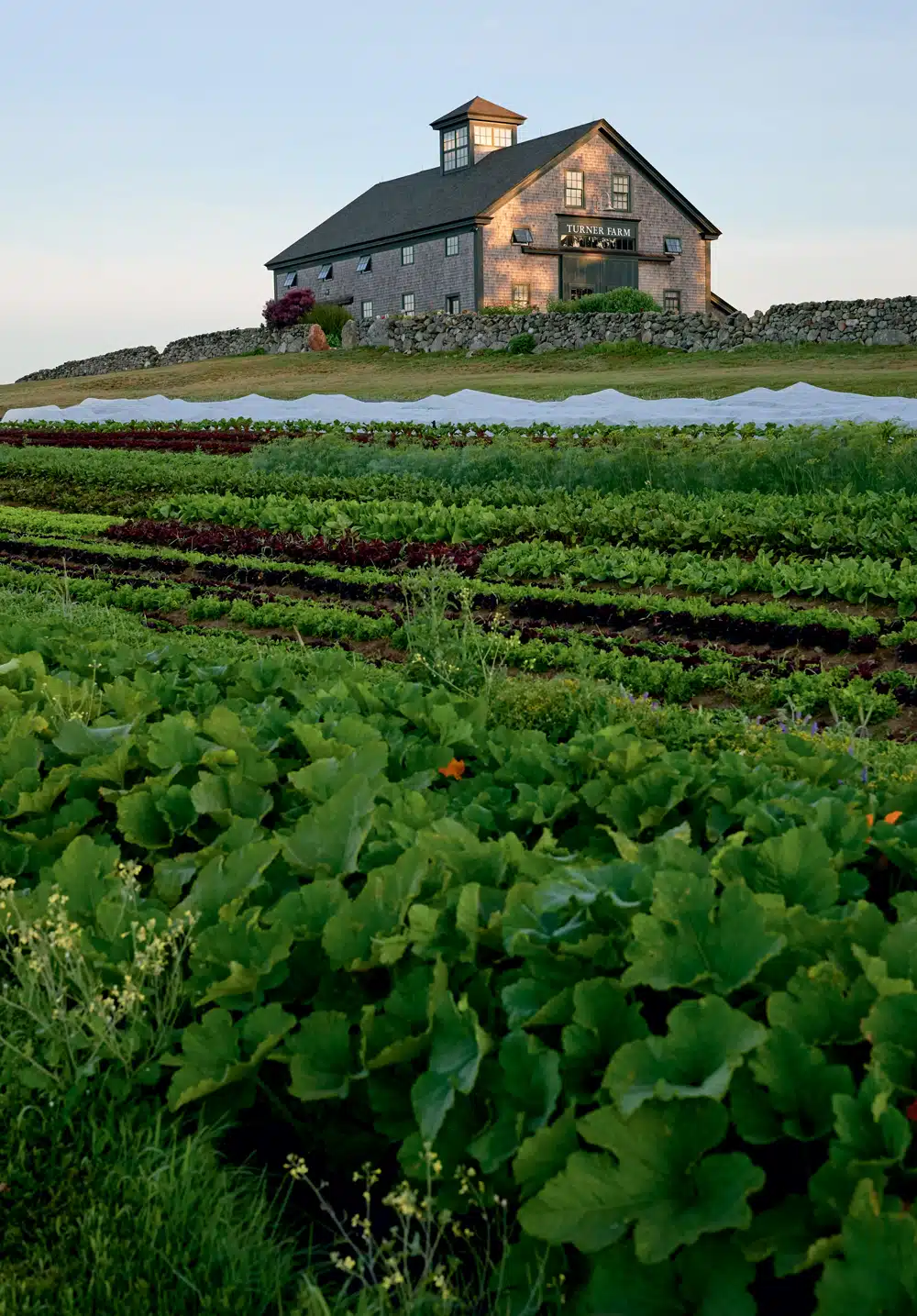
Photo Credit : Mark Fleming
On a hot day, if you want to swim—and you have a car—go to Big Beach at Mullins Head Park, or Smelt Brook, which is a mud-flat cove, so it’s warm. Or you can be like us, and just jump off the town dock.
A few things to remember: Don’t walk in the middle of the road, and get your ferry schedules straight. Unlike Vinalhaven, we have only one boat to the mainland. Know there is no ferry after 3:45. If you forget that, you’ll be spending the night here! —As told to Mel Allen
North Haven Trip Planner
Food & Drink
- Calderwood Hall: Homemade pizzas, salads, and other casual noshes, plus a full bar. Note: Hours vary for market/bakery and restaurant/bar.
- North Haven Brewing Co.: Three-year-old locally owned brewery with a taproom in Calderwood Hall.
Lodging
- Nebo Lodge: Cozy-chic inn with decor by North Haven’s own Angela Adams; on-site restaurant serving elegant dinners that spotlight in-season ingredients.
Getting There
- Maine State Ferry: Daily passenger service from Rockland; cars allowed.
____
An Islander’s Vinalhaven
Phil Crossman | Co-owner, the Tidewater Motel
The most well-known part of Vinalhaven’s history is the granite quarrying. Two of the old quarries are now town parks and probably the best swimming spots on the island. The Vinalhaven Historical Society has an exhaustive quarrying display that’s quite spectacular.
This was a quarrying town, but it’s now a lobster-fishing or seasonal-resident town. We have one of the biggest lobster-fishing fleets and probably the largest population of people who make their living on the sea.
It’s funny the way people generalize—they often come to Vinalhaven with preconceived notions about islanders, or visitors, or fishermen. Another misconception is that our summer residents don’t do much for the island. But they do, and we need them.
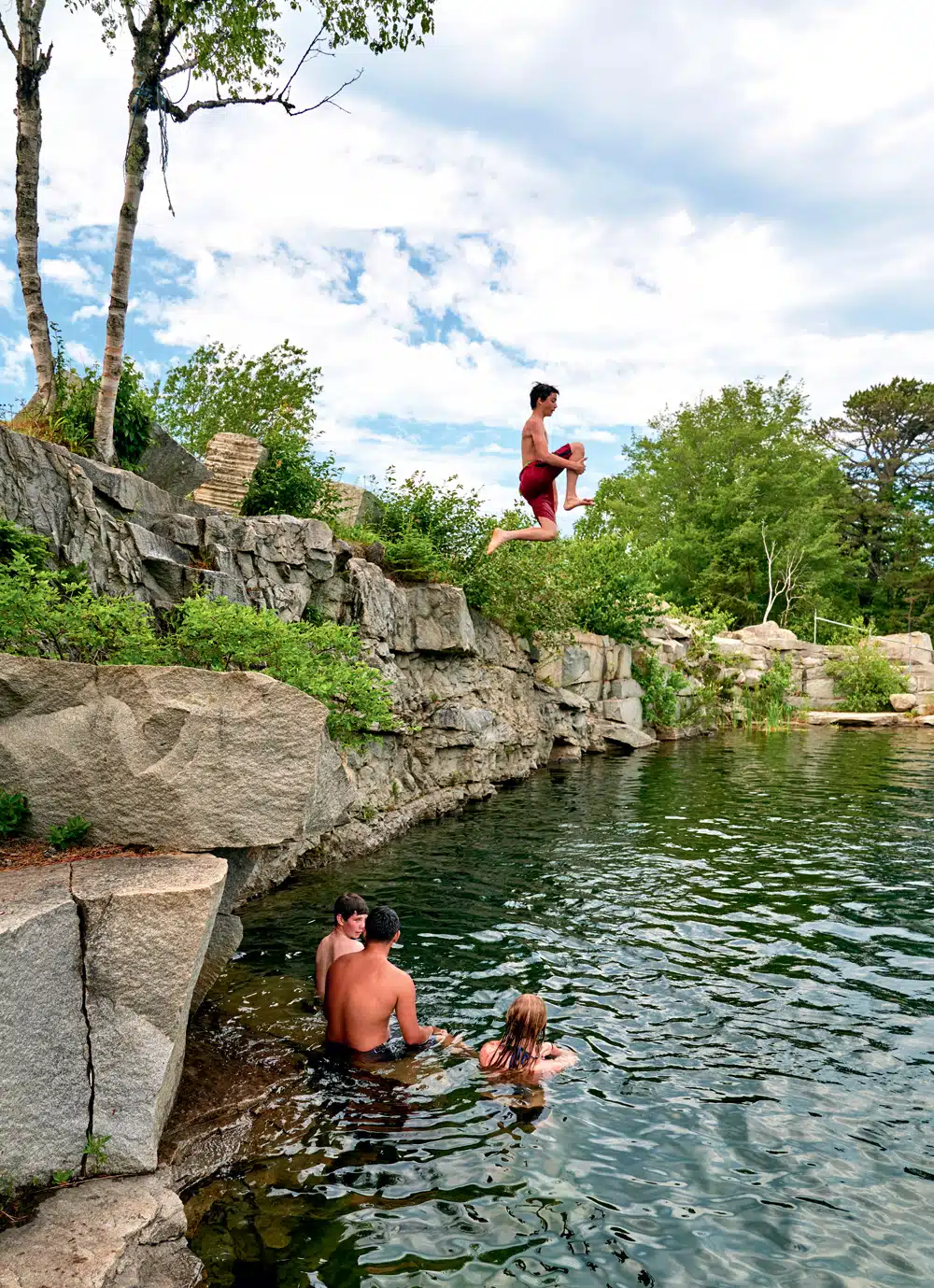
Photo Credit : Mark Fleming
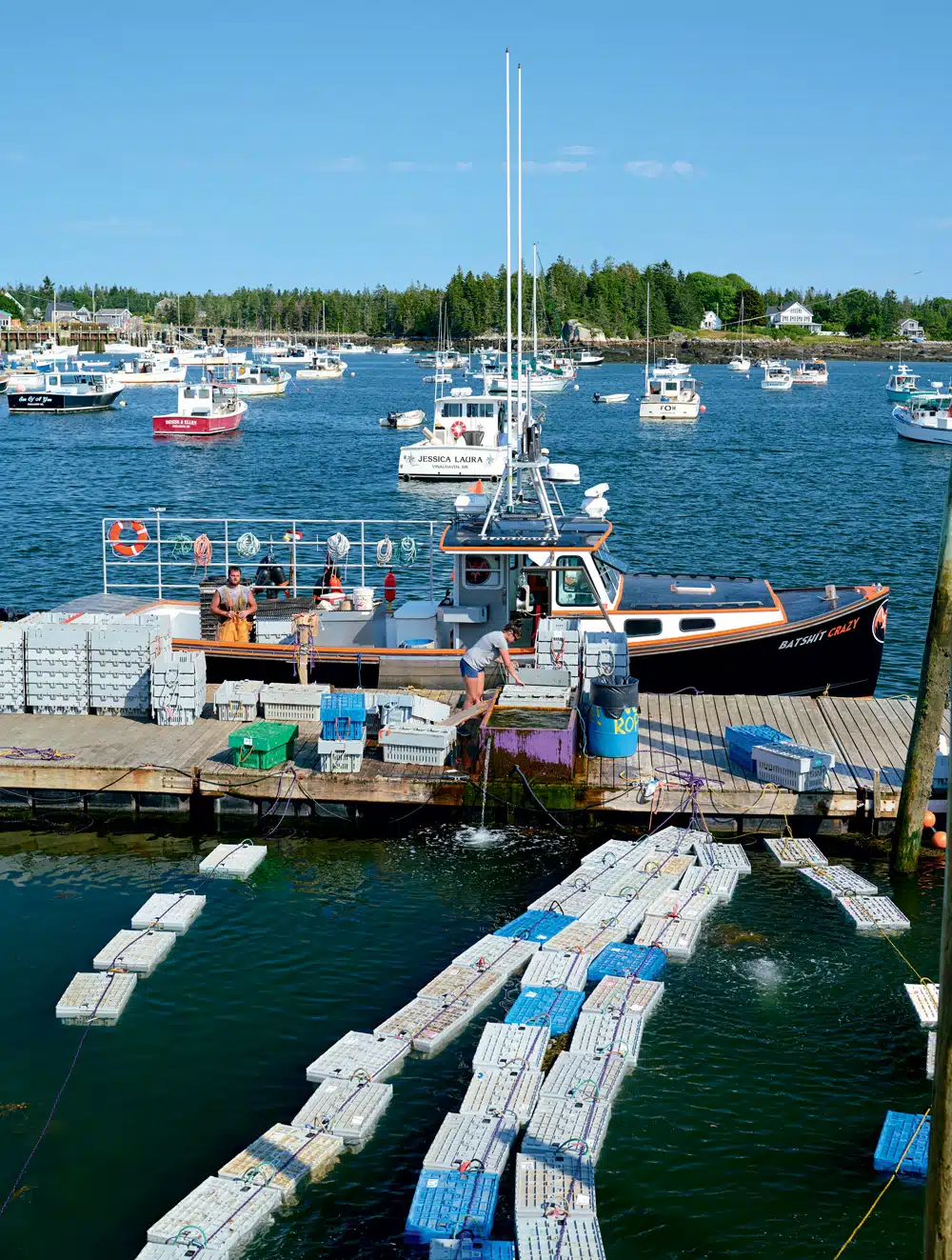
Photo Credit : Mark Fleming
There’s a wide range of people that contribute to the character of Vinalhaven. Many come from surprising backgrounds. For example, I belong to a men’s book group, and among the people we’ve invited to speak are Sonia Sotomayor and Senator George Mitchell. [Chief Justice] John Roberts was here in the motel once—I took him and his family up to Booth’s Quarry for a swim.
Many people enjoy kayaking on island waterways. You can see baby seals following kayakers around right now [early July]; it’s just magical. Some people come to look at the lighthouses, or to learn about or swim in the quarries. There are some great hiking trails in the woods, although most of them eventually lead back to the coast. It’s like the coast is the treasure at the end of the trail.
I’ve walked the entire coastline. The views from the shore are extraordinary.
Lane’s Island, connected to Vinalhaven by a causeway, is a nature conservancy. It’s beautiful, a great place for kids. I lived on Lane’s Island when I was young, and I walked to school on a plank [bridge]. Workmen told me there was a troll down below … I’m still recovering from that!
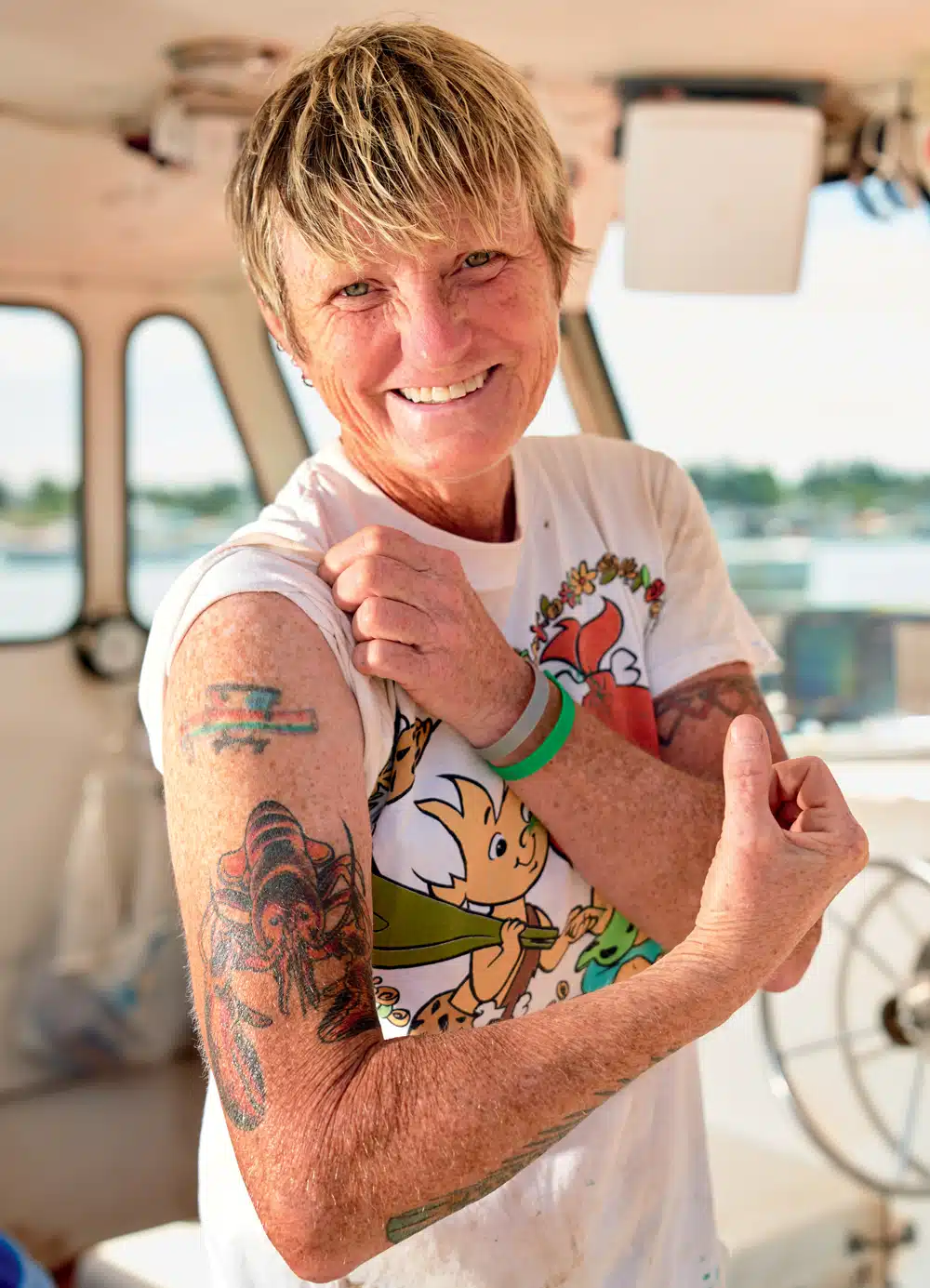
Photo Credit : Mark Fleming

Photo Credit : Mark Fleming
The Haven and Salt, which were two favorite restaurants here, closed recently, but I’m optimistic we’ll have great options this summer. The Nightingale is returning for its second year, Dot & Millie’s is opening, and—perhaps most anticipated—we’re getting a Scandinavian speakeasy called Skål that will look out onto Carver’s Pond.
I don’t know quite how to describe it, but a few times each year, the island has a particular smell … a combination of salt water and fog and breeze that’s so profound. I just stand there until it passes, which it usually does in a few minutes. I haven’t experienced that anywhere else.
The best mementos to bring home from the island? Your memories. —As told to Joe Bills
Vinalhaven Trip Planner
Food & Drink
- The Surfside: A breakfast hub for fishermen that’s renowned for its fish cakes.
- Greet’s Eats: Food truck serving top-notch burgers, sandwiches, and a cult-favorite lobster roll.
- The Nightingale: Casual, seafood-heavy menu and cocktails crafted with homemade syrups and island-grown herbs.
Lodging
- The Tidewater: Landmark lodging situated right on the water and offering 20 clean and attractive rooms and suites.
Getting There
- Maine State Ferry: Daily passenger service from Rockland; cars allowed.
____
An Islander’s Isle au Haut
Kendra Chubbuck | Co-owner, Shore Shop Gifts
The one place that defines Isle au Haut for me is Head Harbor. It’s where I grew up, where I live, and where my ashes will go. It’s where my soul is and where I find contentment; it’s home. I look out my window and I see loons and ospreys and eagles and ducks and terns. People wouldn’t want to leave if they came here.
But getting here, it’s a struggle. You’ve got to pack everything, you’ve got to drive hours, and then take a mail boat because there’s no ferry. We call Isle au Haut “Lug au Haut.” My husband, John, and I took two years to build our house, bringing everything over on that mail boat. The logistics—it was incredible.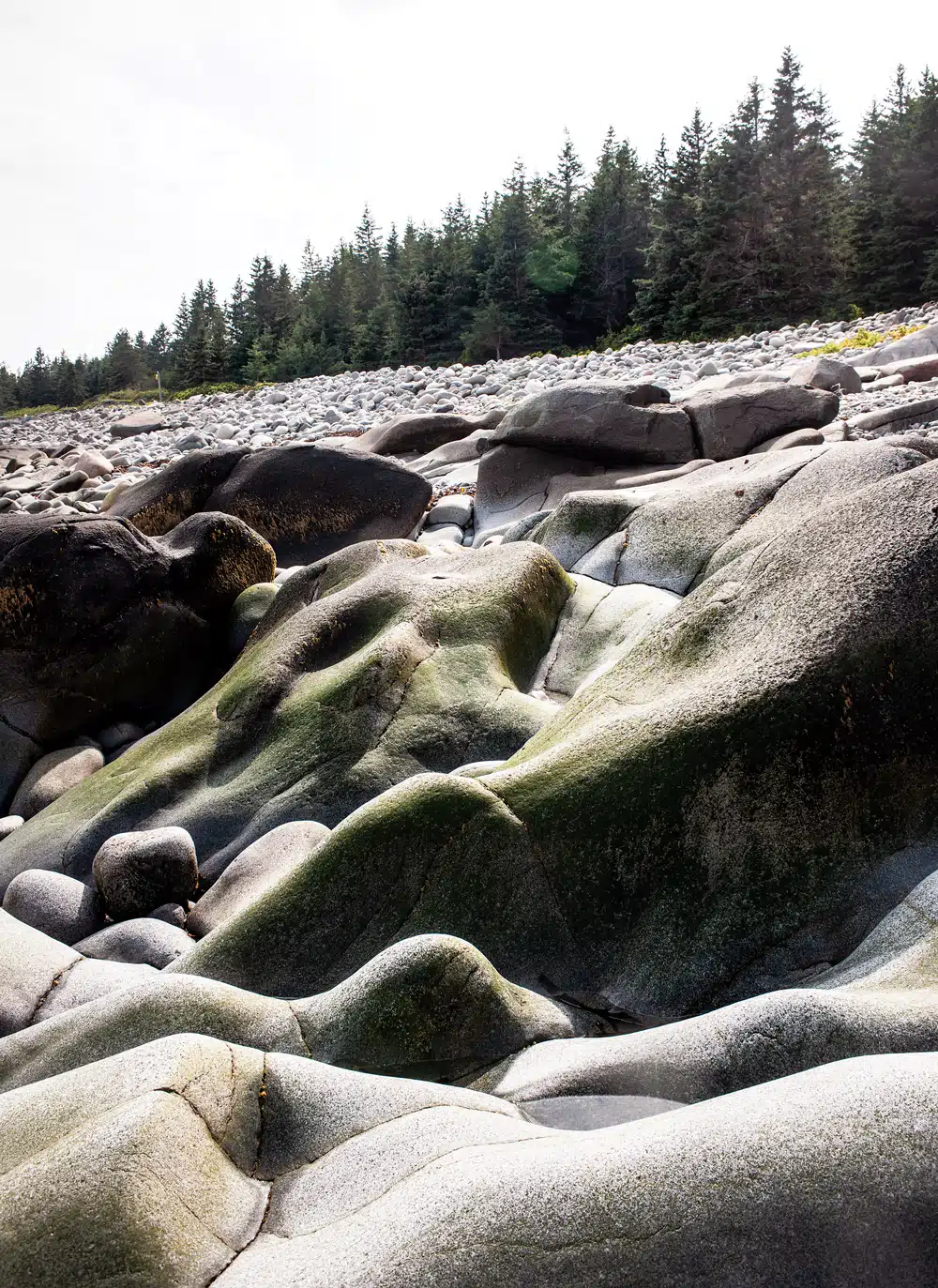
Photo Credit : Winky Lewis

Photo Credit : Winky Lewis
When people come into my gift shop looking for places to visit, I send them to the Union Congregational Church. It’s 162 years old, and its chandelier is awesome. It takes us 45 minutes to light it. It’s kerosene. It’s huge. It’s got three wicks in each lantern and maybe 20 lanterns.
Then I send them to the town hall, especially if it’s library day. The library is open Monday, Wednesday, and Friday in the summer, and the librarian makes blueberry muffins. The lighthouse, on Robinson Point—it’s awesome there. And Boom Beach, where all the rocks are round, though I don’t know how any are left because people take them for doorstops or to paint!
There’s a food truck, the Maine Lobster Lady, that has wonderful things to eat—chicken, vegetarian, sandwiches, and these great peanut butter balls—and it’s right beside the Island Store, which has garden fruits and vegetables, ice cream, and fresh seafood.
I always send people to Thunder Gulch. It’s a different hike with a different view that’s not on any national park map. It’s about a mile in, and you climb to a plateau where you can see Head Harbor. Duck Harbor Mountain is another option. It’s short but steep, and you don’t even have to go to the peak to get a super view. About half a mile from the top you can see the western Penobscot Hills, Vinalhaven, North Haven, and Saddleback Ledge.
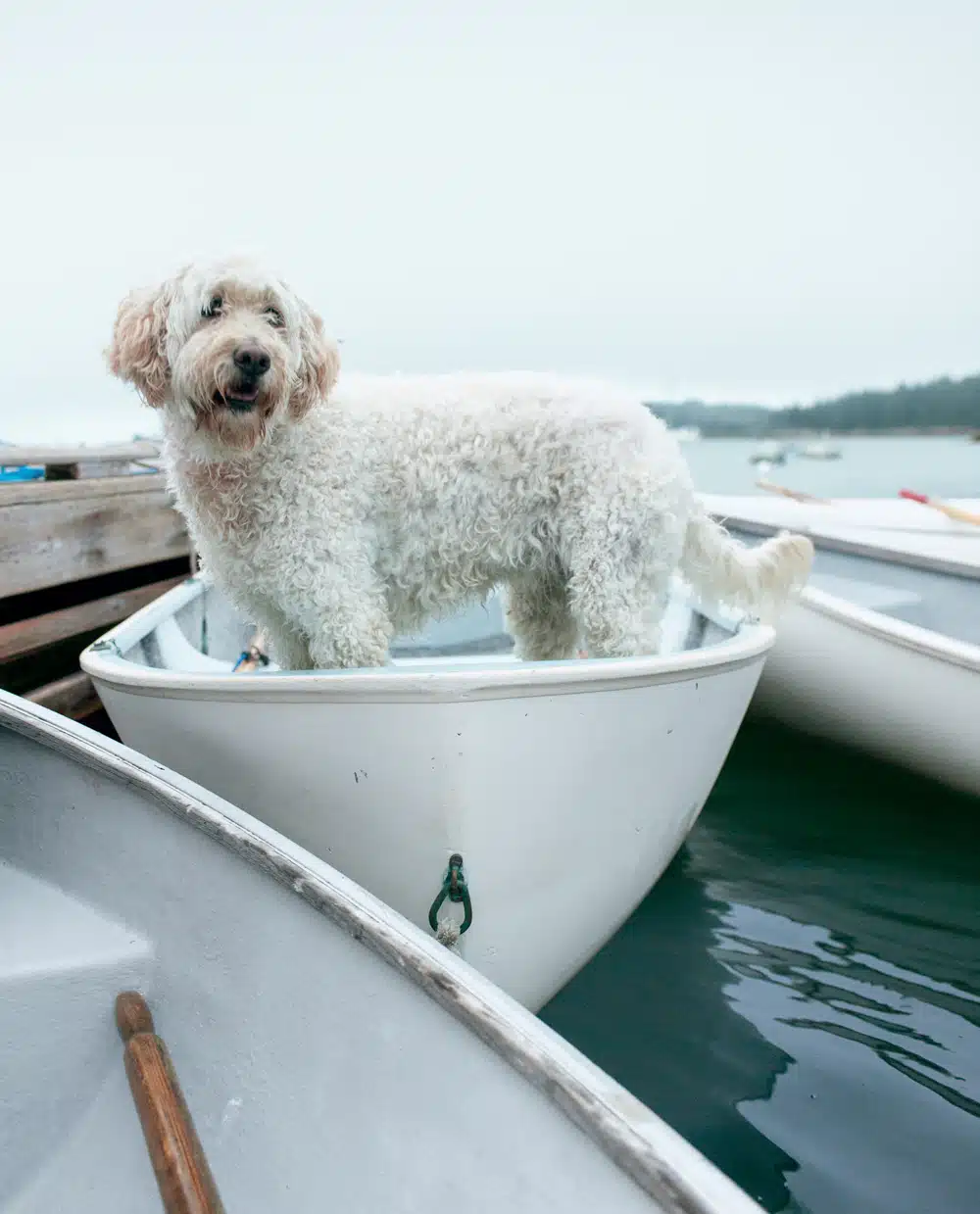
Photo Credit : Winky Lewis
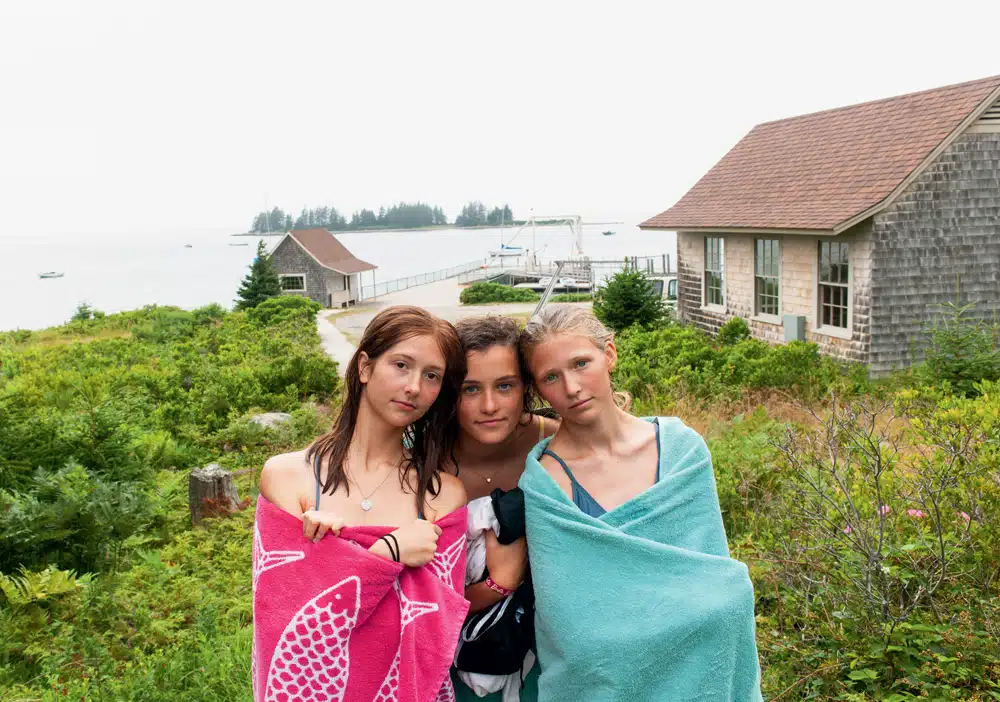
Photo Credit : Winky Lewis
Some may be bothered by the fact that they can’t get off the island. It’s very isolating to them: When’s the next boat? They feel like they’re trapped. I have landlines out here; my cellphone doesn’t work. That freaks people out.
Kids really love it here, though. We have Long Pond, a playground, games of volleyball or basketball at the town hall. They can ride bikes, play croquet and cards, go squid fishing at night.
You just need to relax and let go and not be so dependent on how you live on the mainland. You have to unhook. —As told to Ian Aldrich
Isle au Haut Trip Planner
Food & Drink
- The Island Store: One-stop for snacks and basic provisions.
- The Maine Lobster Lady Food Truck: Made-from-scratch lunch eats, including lobster rolls and whoopie pies.
Lodging
- Extremely limited and often booked months in advance. Best bets are in nearby Stonington, such as the Inn on the Harbor, whose 13 comfy rooms are named for Maine windjammers.
Getting There
- Isle au Haut Ferry and Mail Boat: Daily passenger service from Stonington.
- Old Quarry Ocean Adventures: Daily passenger service, plus water taxi service, from Stonington.





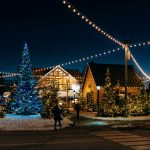

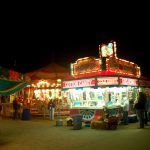
Islesboro …. my view across the bay (I can see North Haven and Vinalhaven too). Our Lincolnville-Islesboro Ferry departs hourly 8a-5p daily throughout the summer. 15 min ride on the gay via the Margaret Chase Ferry (largest of the Maine State Ferries). Stay with us at Bay Leaf Cottages en route to Islesboro and get the Islesboro Discount.
I spent the summer of 1949 working on Isle au Haut. It was a paradise and unforgettable!
I’ve visited all of these wonderful islands. I was left with the hope that in another issue you do the same coverage for places like swan’s Island, Frenchboro, Cranbury and others. Swan’s has a historic lighthouse many hiking trails, white sand beaches, an amazing granite quary for swimming, a state of the art library, a marine museum, a historical society, the Saturn press, a stunning working harbor and amazing people including some world renowned summer folks.
I am on my way!
loved every photo, every word. Worked years ago at the Jackson Memorial Lab right after college, and have had Maine in my heart ever since.
Why is no one mentioning Matinicus?!!’
I know Spruce Head Island’s only claim to fame was the granite quarries and now a giant lobster business but I grew up there in the fifties and It has left me a wonderful batch of childhood memories.
Stephen Allard
No Matinicus. Maine’s farthest out, most isolated and least populated? How could you not list it?
Great description of the island culture and life long residents. Hope to visit after visiting my sister on Lake Sebago for 30 years. Maine is beautiful and changes with the seasons.
Well done. I grew up in Bar Harbor on Mt. Desert Island. Maine’s islands are special.
That photo with the row bkat on shore next to,the lighthouse station reminds me of a Wyeth painting, infact I had to go back and see that it wasnt.. beautiful photo with delicate soft pastel colors. Would make a nice wall hanger.
Been a while since I was there and the memories keep coming back. I’m 86 years old and returning there to the coast would be super! At least I can read about it in Yankee